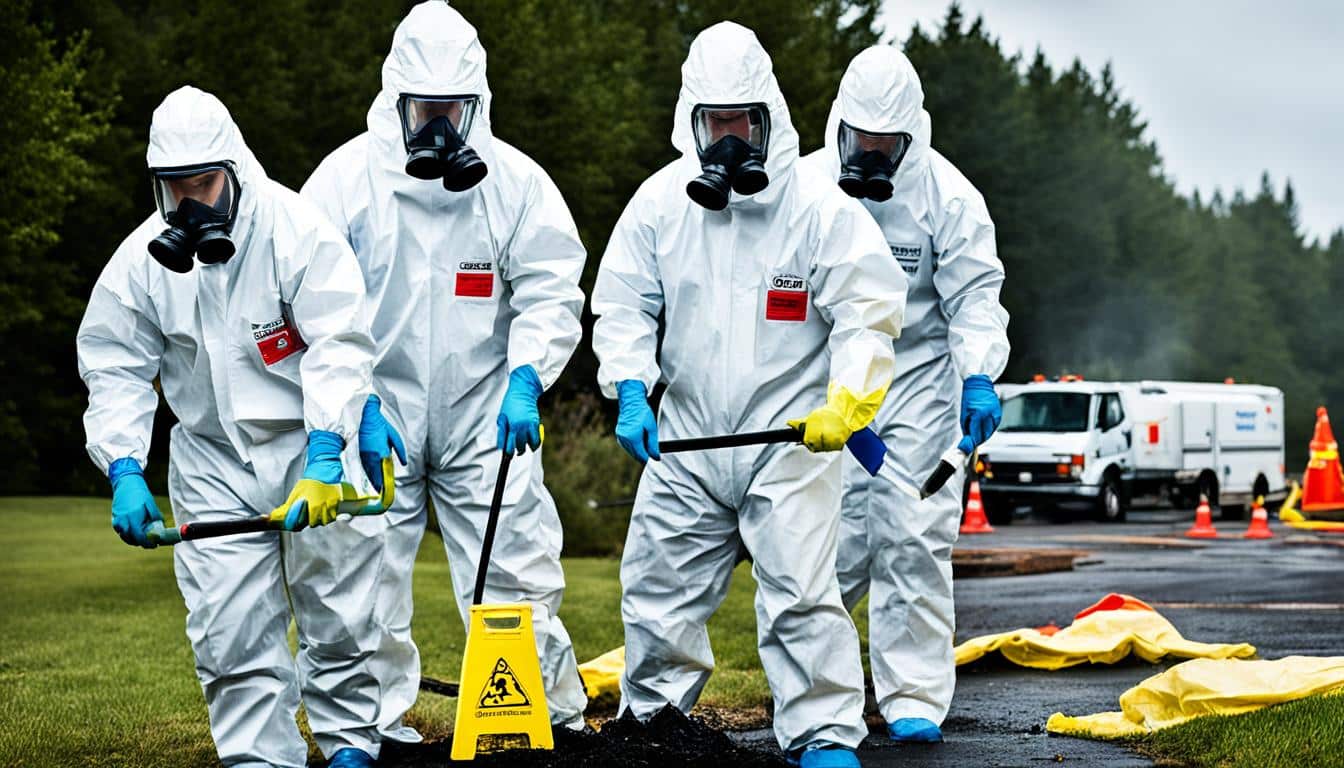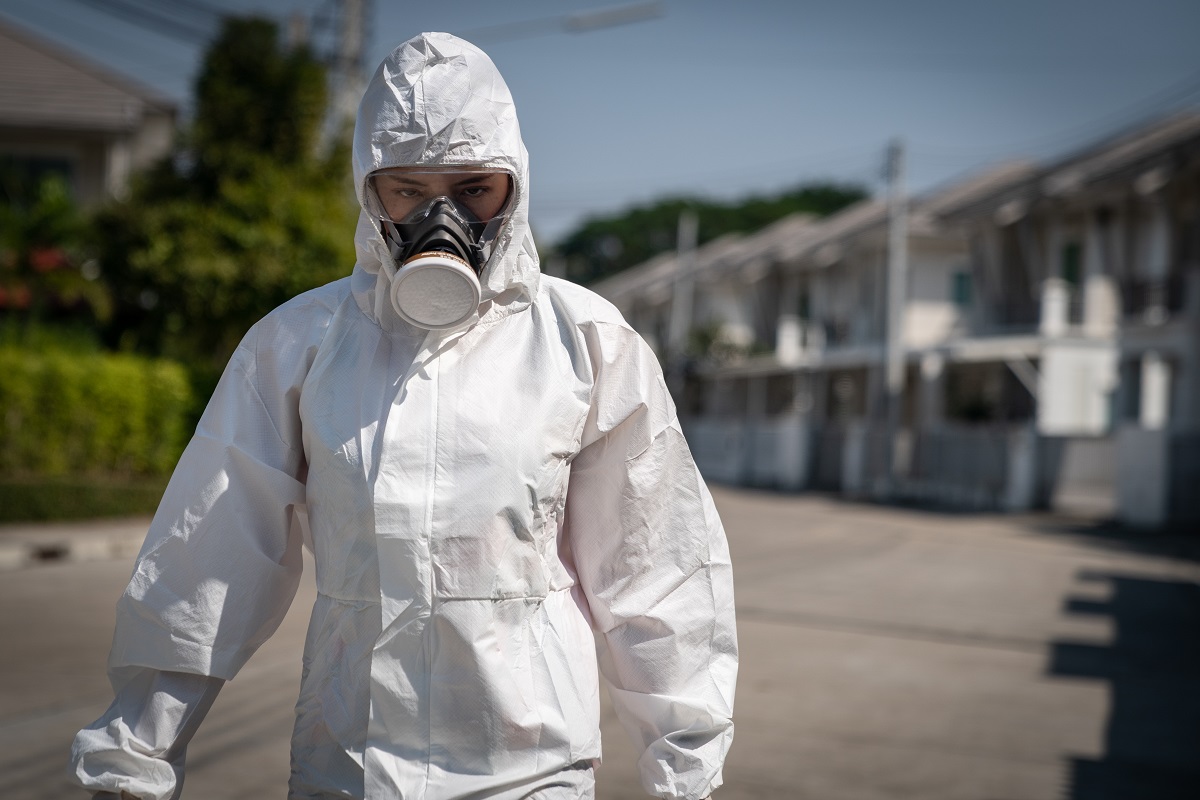Clandestine Lab Cleanup: Comprehensive Purification for Hazardous Sites
Clandestine Lab Cleanup: Comprehensive Purification for Hazardous Sites
Blog Article
Expert Biohazard Cleaning and Decontamination for Blood, Bodily Fluids, and Hazardous Materials
In the realm of biohazard cleaning and purification for blood, physical fluids, and dangerous materials, accuracy and expertise are extremely important. The possible health and wellness risks associated with direct exposure to biohazards highlight the crucial need for thorough handling and detailed clean-up. Specialized training gears up specialists with the expertise and skills necessary to resolve these harmful situations properly. Nonetheless, it is not simply regarding cleaning up; the importance of using appropriate decontamination strategies can not be overstated. As we browse the elaborate landscape of biohazard cleanup, recognizing the nuances of guidelines, compliance, and the specific equipment at play comes to be crucial in ensuring a secure and extensive decontamination process.
Health Risks of Biohazard Direct Exposure
Direct exposure to biohazards poses considerable health and wellness threats that can cause severe consequences for neighborhoods and people alike. Biohazards incorporate a vast array of organic compounds, consisting of blood, physical liquids, mold and mildew, microorganisms, infections, and various other potentially infectious materials. When individuals enter contact with these biohazards, whether with mishaps, inappropriate handling, or ecological exposure, they deal with the threat of having significant illnesses or illness.
Among the primary health threats connected with biohazard exposure is the transmission of infectious illness. Bloodborne pathogens such as HIV, liver disease B and C, and different microorganisms can be existing in biohazardous materials, positioning a direct threat to human health. Breathing in air-borne biohazards like mold spores or coming into call with infected surface areas can also lead to respiratory concerns, allergic reactions, and other adverse wellness impacts.
Moreover, biohazard exposure can have lasting health and wellness implications, with some diseases showing up years after the preliminary contact (Blood Cleanup). Consequently, it is vital to prioritize proper biohazard cleansing and decontamination to minimize these health and wellness risks and make certain the security of communities and people

Specialized Training for Biohazard Clean-up
When it comes to dealing with biohazard cleanup effectively and securely, specialized training plays a fundamental function in making certain proper purification treatments are followed. Biohazard clean-up calls for specific knowledge and skills to successfully minimize risks related to bloodborne microorganisms, physical liquids, and unsafe products. Professionals trained in biohazard clean-up go through extensive guideline on just how to securely handle, remove, and throw away biohazardous products to stop contamination and exposure.
Specialized training for biohazard cleanup covers a variety of vital topics, including appropriate personal protective equipment (PPE) usage, bloodborne pathogen awareness, decontamination techniques, and contaminated materials disposal protocols. Individuals educated in biohazard cleaning are outfitted with the essential knowledge to evaluate contamination levels, identify potential threats, and apply ideal cleaning treatments in compliance with regulatory criteria.
Continual training and education and learning are vital in the field of biohazard cleanup to remain upgraded on the newest decontamination modern technologies, safety and security procedures, and policies. By purchasing specialized training, biohazard cleaning experts can efficiently respond to emergency situation clean-up situations and guard both public health and wellness and the environment.
Importance of Correct Decontamination Strategies
Using proper purification methods is crucial in biohazard cleaning to efficiently reduce and remove dangerous materials health risks. Reliable purification not only makes sure the elimination of noticeable traces of blood, physical fluids, and various other biohazards yet also targets unnoticeable virus that may posture severe wellness risks otherwise correctly gotten rid of. By following rigid decontamination procedures, educated professionals can dramatically reduce the danger of direct exposure to dangerous bacteria, infections, and bacteria that might bring about infections or diseases.
Correct purification techniques include using specialized equipment and disinfectants how to clean up blood that are especially made to neutralize biohazards successfully. Comprehensive cleaning and sanitation of infected locations are essential to avoid the spread of microorganisms and make certain a safe environment for residents. Furthermore, the right disposal of biohazardous waste adhering to purification treatments is essential in avoiding contamination of other surfaces or people.

Equipment and Devices for Safe Clean-up
When dealing with blood, bodily liquids, or hazardous materials, biohazard cleansing professionals count on specialized gear to lessen direct exposure risks and completely sanitize the afflicted location. Additionally, biohazard cleaning sets containing disinfectants, absorbing materials, and biohazard bags are utilized to securely get rid of and have of contaminated products.
Advanced cleansing tools like hospital-grade disinfectants, HEPA-filtered vacuum cleaners, and misting machines are utilized to disinfect surface areas and remove biohazards successfully. Specialized equipment such as sharps containers and biohazard waste disposal bins are made use of to securely manage sharp items and biohazardous waste products. By utilizing the best devices and devices, biohazard cleansing experts can guarantee a detailed cleanup process that prioritizes security and lessens wellness threats for both employees and occupants of the afflicted area.
Rules and Conformity in Biohazard Cleansing
Correct adherence to regulations and compliance standards is critical in biohazard cleaning to guarantee the safety and security of both employees and the environment. Government agencies such as OSHA (Occupational Safety and Wellness Management) and the EPA (Environmental Protection Agency) have actually established details guidelines for biohazard clean-up treatments to reduce health and wellness threats and environmental contamination. These guidelines cover a variety of facets including the handling, transport, and disposal of biohazardous materials, along with the required training and safety equipment needed for employees involved in the cleaning process.
Biohazard cleansing business should stay up-to-date with these laws to guarantee that their procedures satisfy the needed security criteria. Failing to abide by these policies can lead to serious repercussions, consisting of penalties, lawsuit, and threatening the wellness of people and the setting. By following stringent guidelines and conformity actions, biohazard cleansing firms can successfully minimize threats and ensure a safe and detailed cleanup procedure for all celebrations entailed.
Final Thought
Finally, biohazard cleansing and purification call for specific training, correct methods, and adherence to regulations. Direct exposure to blood, physical liquids, and unsafe materials presents significant health risks, making it essential to make use find more info of the best devices and tools for secure clean-up. By adhering to rigorous procedures and guidelines, professionals can efficiently mitigate the risks linked with biohazard direct exposure and make sure the safety of both themselves and others.
As we browse the elaborate landscape of biohazard cleanup, understanding the nuances of regulations, conformity, and the customized equipment at play comes to be crucial in making certain a secure and comprehensive purification procedure. (Blood Cleanup)
When it comes to managing biohazard clean-up successfully and securely, specialized training plays a basic role in guaranteeing appropriate decontamination procedures are complied with.Using appropriate decontamination methods is important in biohazard clean-up to successfully get rid of harmful materials and lessen health and wellness risks. Additionally, biohazard cleansing packages having anti-bacterials, absorptive materials, and biohazard bags are used to this website safely have and get rid of of polluted items.
Federal government agencies such as OSHA (Occupational Safety and Wellness Management) and the EPA (Environmental Security Agency) have developed details guidelines for biohazard cleanup procedures to decrease health and wellness risks and ecological contamination.
Report this page